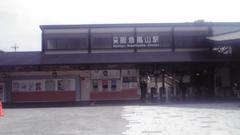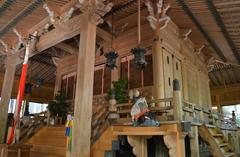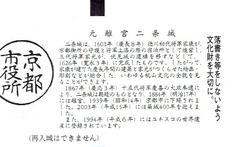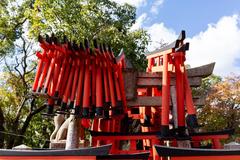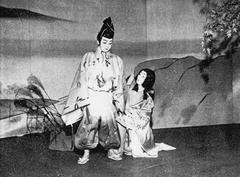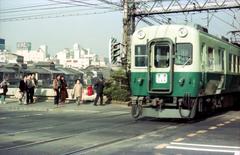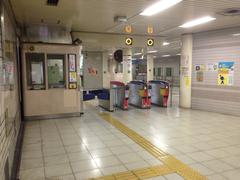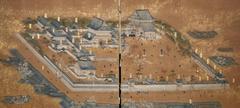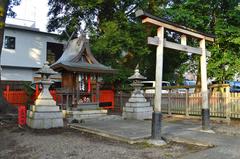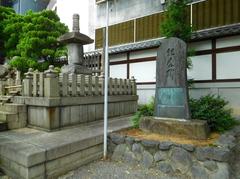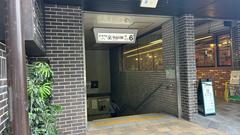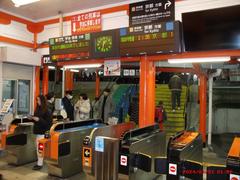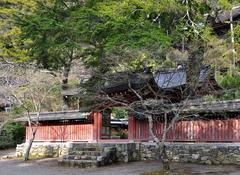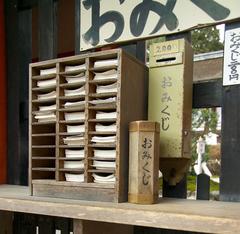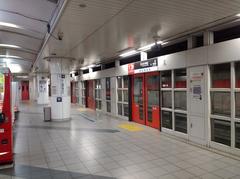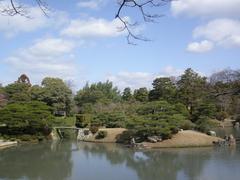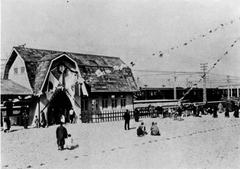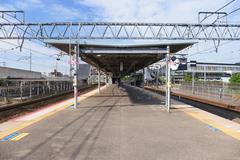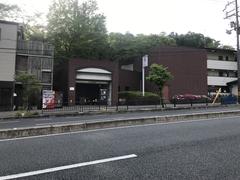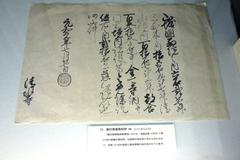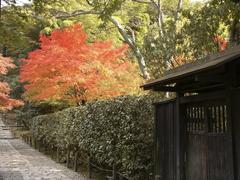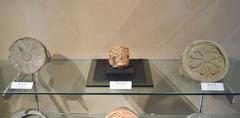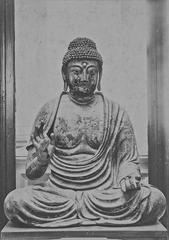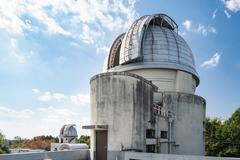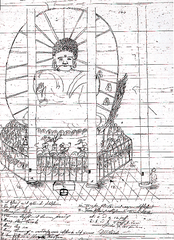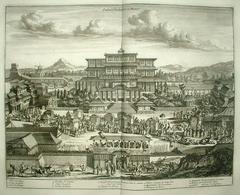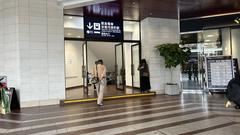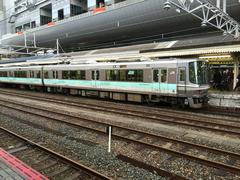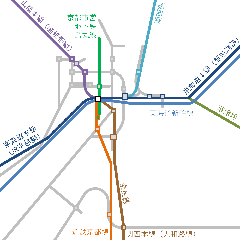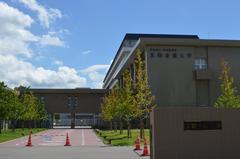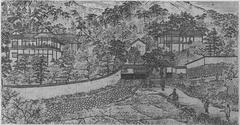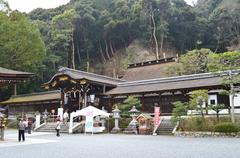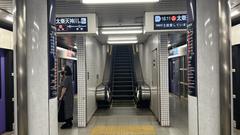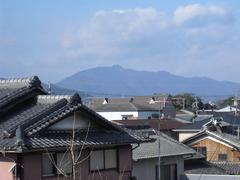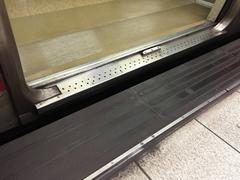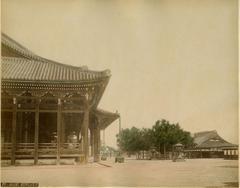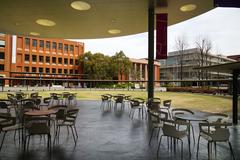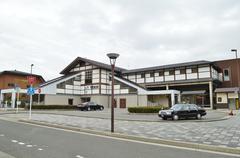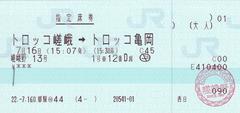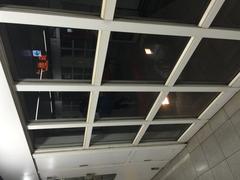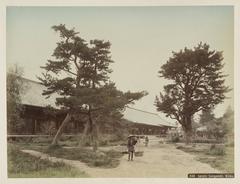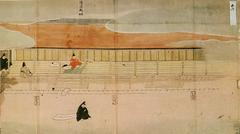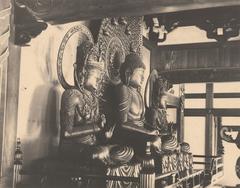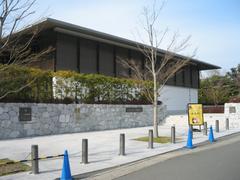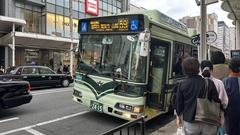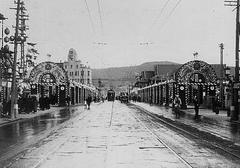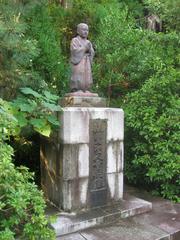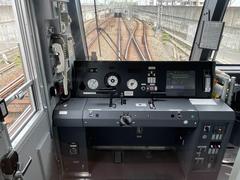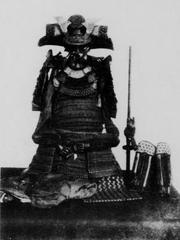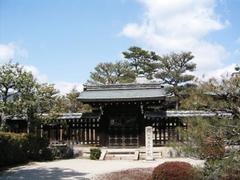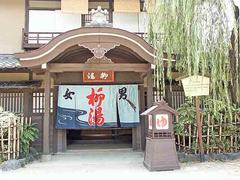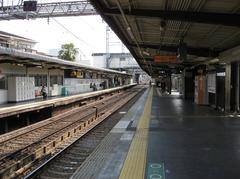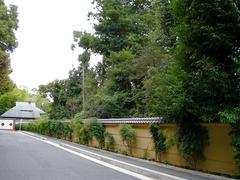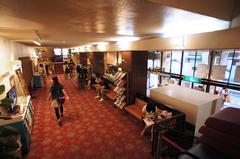
Marutamachi Station Kyoto: Visiting Hours, Tickets, and Comprehensive Travel Guide
Date: 04/07/2025
Introduction
Marutamachi Station (丸太町駅) is a crucial node on Kyoto’s Karasuma Subway Line, seamlessly blending modern transit functionality with access to the city’s ancient imperial heart. Conveniently located at the intersection of Marutamachi-dori and Karasuma-dori in Nakagyo Ward, the station offers a gateway to iconic sites such as the Kyoto Imperial Palace, Kyoto Gyoen National Garden, and a variety of governmental and cultural institutions. Whether you’re a first-time visitor or a seasoned explorer, this guide provides everything you need to navigate Marutamachi Station—covering visiting hours, ticketing, accessibility, nearby attractions, and practical travel tips.
Origins and Historical Significance
Opened in 1981, Marutamachi Station was designed to meet the needs of a growing city while respecting Kyoto’s millennia-old urban landscape. The station’s strategic location reflects the city’s Heian-period grid, which continues to shape Kyoto’s unique character today. The area surrounding Marutamachi Station has long been a center of political and cultural activity due to its proximity to the Kyoto Imperial Palace, once the seat of Japan’s imperial family for over a thousand years.
Station Layout, Facilities, and Accessibility
Structure and Design
- Underground Layout: The station is fully underground, featuring a single island platform serving two tracks (northbound to Kokusaikaikan and southbound to Kyoto Station).
- Entrances and Exits: Multiple street-level entrances, including exits 1–7, are strategically positioned for direct access to government offices, historical sites, and main thoroughfares.
- Ticket Gates: Located on the first basement level (B1F), with both manned and unmanned gates for efficient passenger flow.
Accessibility
- Elevators and Escalators: All station levels are accessible via elevators and escalators, ensuring barrier-free access for travelers with disabilities, seniors, and those with strollers or luggage.
- Tactile Paving: Guidance for visually impaired passengers is integrated throughout the station.
- Multilingual Signage: Directions and instructions are clearly posted in Japanese and English, with some additional language support.
Passenger Amenities
- Coin Lockers: Various sizes available near ticket gates for convenient luggage storage.
- Restrooms: Clean, accessible facilities with baby-changing stations.
- Convenience Stores & Vending Machines: For snacks and travel essentials.
- Information Desk: Staff with basic English skills are available during operating hours to assist travelers.
- Security: CCTV cameras, emergency intercoms, and AEDs ensure a safe environment.
Operating Hours and Train Frequency
- Station Hours: Approximately 5:30 AM to midnight daily, matching the first and last trains of the Karasuma Line.
- Train Frequency: Every 4–6 minutes during peak times, and every 7–10 minutes off-peak, minimizing wait times for commuters and tourists alike.
(Kyoto City Bus & Subway Guide)
Ticketing: Options and Tips
- Single Tickets: Purchase at multilingual automated machines; fares range from 220 to 360 yen depending on destination.
- IC Cards: Rechargeable cards like ICOCA and Suica allow tap-in/tap-out access across Kyoto’s transit network.
- Day Passes: The Subway & Bus 1-Day Pass (1,100 yen) offers unlimited travel and is ideal for sightseeing.
- Fare Adjustment Machines: Located near ticket gates for correcting underpaid fares.
Connectivity and Transfers
- Karasuma Line: Connects Marutamachi Station to major city districts, with easy transfer to the Tozai Line at Karasuma Oike Station (one stop south).
- Bus Integration: Multiple city bus lines serve stops adjacent to the station, providing direct routes to Kinkaku-ji, Ginkaku-ji, Kitano Tenman-gu, and other attractions.
- Keihan Oto Line: Jingu-Marutamachi Station is about a kilometer east, offering additional rail connections.
Nearby Attractions and Cultural Highlights
Kyoto Imperial Palace & Kyoto Gyoen National Garden
Just northeast of the station, these grounds are open to the public for free, with palace hours generally from 9:00 AM to 5:00 PM (last admission 4:30 PM). The gardens are renowned for cherry blossoms in spring and vibrant foliage in autumn.
Government & Civic Institutions
- Kyoto Prefectural Office
- Kyoto District Court
- Kyoto Police Headquarters
These buildings, located within walking distance, showcase Kyoto’s modern administrative architecture.
Kyoto International Manga Museum
A short walk southwest, this museum houses over 300,000 manga volumes and regularly hosts exhibitions and live events—a must for pop culture enthusiasts.
Temples and Shrines
- Rozan-ji Temple: Birthplace of “The Tale of Genji” author, scenic during Setsubun and early summer.
- Nashinoki Shrine: Known for its June Hydrangea Festival and tranquil atmosphere.
Other Noteworthy Spots
- Kyoto State Guest House: Modern architecture in the Imperial Park (advance reservation required).
- Traditional Machiya Townhouses: Experience Kyoto’s wooden townhouse culture in the neighborhoods west and south of the station.
Dining, Shopping, and Local Experiences
- Cafés and Restaurants: Surrounding streets offer everything from noodle shops to high-end kaiseki dining, as well as traditional kissaten and wagashi (Japanese sweets) shops.
- Craft Shopping: South toward Karasuma Oike Station, find artisanal stores selling textiles, ceramics, and Kyoto stationery.
Seasonal Events and Festivals
- Gion Matsuri: Access the July festival’s parade routes easily from Marutamachi Station, avoiding the largest crowds.
- Gozan-no-Okuribi (Daimonji Bon Fire): Enjoy this August event from Kyoto Gyoen National Garden, with excellent views of the iconic mountain fires.
Sustainability and Efficient Mobility
Marutamachi Station’s integration with subway, bus, and pedestrian routes supports Kyoto’s sustainable urban mobility goals. Bicycle parking and walkable streets encourage eco-friendly travel.
Practical Information and Visitor Tips
| Facility | Details |
|---|---|
| Ticket Machines | Multilingual, IC card compatible |
| Coin Lockers | Various sizes, near ticket gates |
| Restrooms | Accessible, includes baby-changing stations |
| Elevators/Escalators | Full accessibility for all passengers |
| Convenience Store | Available within station |
| Vending Machines | Throughout the station |
| Information Desk | Staffed during operating hours |
| Security | CCTV, emergency intercoms, AEDs |
| Bus Connections | Multiple routes for city-wide access |
| Hotel Proximity | Multiple hotels nearby |
Travel Tips
- Plan your trip in advance during peak seasons (cherry blossom/autumn foliage) to avoid crowds.
- Use coin lockers for hands-free sightseeing.
- Consider day passes or IC cards for flexible travel.
- Check for temporary changes (e.g., locker closures during security events).
Frequently Asked Questions (FAQ)
Q: What are Marutamachi Station’s operating hours?
A: Daily, roughly 5:30 AM to midnight.
Q: How do I buy tickets?
A: Use automated machines for single tickets or IC cards; day passes are also available.
Q: Is the station accessible?
A: Yes, with elevators, tactile paving, and multilingual signage.
Q: Are there lockers for luggage?
A: Yes, coin lockers are located near the ticket gates.
Q: What major attractions are nearby?
A: Kyoto Imperial Palace, Kyoto Gyoen National Garden, Kyoto International Manga Museum, Rozan-ji Temple, and more.
Q: How can I reach Kinkaku-ji or Ginkaku-ji?
A: Use connecting city buses from stops near Marutamachi Station.
Visual & Interactive Resources
Enhance your planning with official maps, virtual tours, and high-quality images of the station and nearby attractions. Interactive navigation tools are available on tourism and transit websites.
Conclusion
Marutamachi Station is more than a transit hub—it’s a vibrant gateway to Kyoto’s imperial heritage, cultural landmarks, and contemporary civic life. With comprehensive facilities, excellent accessibility, and seamless connections to subway and bus networks, the station ensures a smooth and memorable experience for all visitors. By planning ahead and leveraging the available resources, you’ll enjoy Kyoto’s treasures starting from this central and historic station.
Call to Action
For real-time updates, detailed guides, and offline maps, download the Audiala app. Stay connected with the latest Kyoto travel tips by following our social media channels, and explore our related articles on must-see attractions and urban transit for a richer Kyoto adventure.
Sources
- Marutamachi Station: Your Complete Visitor’s Guide to Kyoto’s Historic Subway Hub, 2025 (Japan Experience)
- Marutamachi Station Kyoto: Visiting Hours, Tickets, Facilities & Nearby Historical Sites, 2025 (Kyoto City Bus & Subway Guide PDF)
- Marutamachi Station in Kyoto: Visitor Guide, Tickets, and Nearby Historical Sites, 2025 (UrbanRail.Net)
- Key Attractions and Points of Interest Nearby, 2025 (welcome-to-kyoto.com)
- Matcha-JP, 2025 (Matcha-JP)
- FlipJapanGuide, 2025 (FlipJapanGuide)
- Nomadasaurus, 2025 (Nomadasaurus)
















